A drop-in stainless steel kitchen sink is a popular and practical choice for both modern and traditional kitchens. Known for its durability, versatility, and timeless aesthetic, a stainless steel sink can complement nearly any kitchen design while providing a reliable, long-lasting workspace. Drop-in, or top-mount sinks, are designed with a visible rim that rests on the countertop surface, making installation straightforward and compatible with most countertop materials. The sturdy design of stainless steel resists corrosion, heat, and stains, making it an ideal choice for a busy kitchen. Whether you’re a professional chef or a home cook, a drop-in stainless steel sink can provide the durability and functionality you need without compromising on style.
Stainless steel sinks come in various gauge measurements, which refer to the thickness of the steel. A lower gauge, such as 16 or 18, is thicker and more durable, while higher gauges, like 20 or 22, are thinner and slightly less resistant to dents and noise. A thicker gauge often comes at a higher price, but it provides extra durability and a quieter experience when washing dishes. If your kitchen sees heavy usage, it’s wise to invest in a lower-gauge sink. The right gauge ensures your sink can withstand the daily wear and tear of heavy pots, pans, and sharp utensils without showing signs of wear. Additionally, a lower gauge can absorb more sound, which is beneficial in maintaining a quieter kitchen environment.
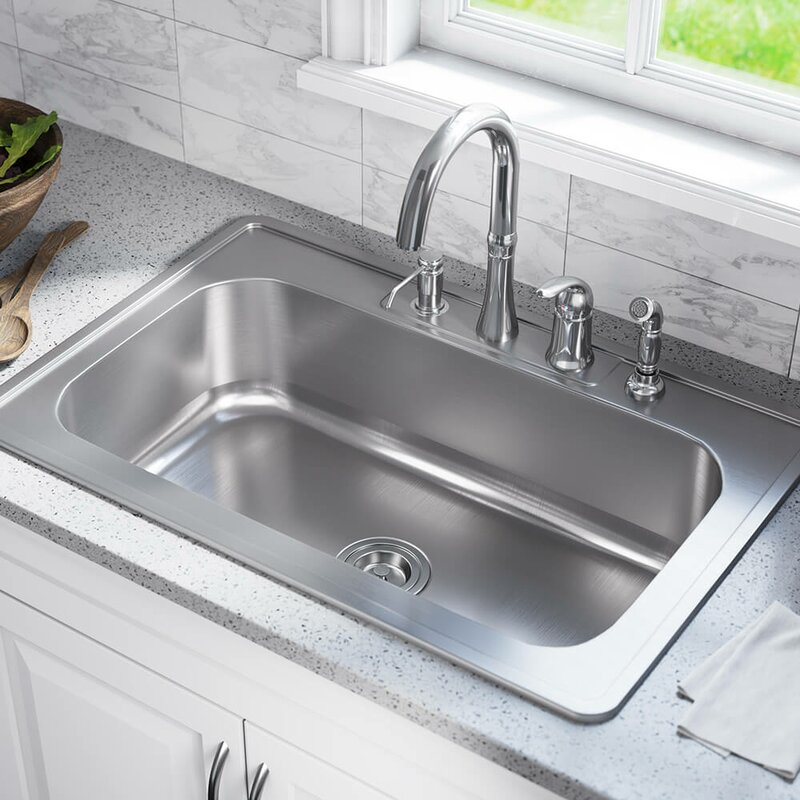
The configuration of a drop-in stainless steel sink can vary, with single-bowl and double-bowl options being the most common. A single-bowl sink offers ample space for washing large items like baking sheets and pots, making it a good choice for kitchens with limited space. On the other hand, a double-bowl sink offers more versatility by allowing for separate areas for washing and rinsing, which can streamline cooking and cleaning tasks. Some double-bowl models come with different bowl sizes, allowing one side for washing and the other for prep work or drying. The decision between a single or double bowl depends on your cooking habits and kitchen needs.
A drop-in stainless steel sink is relatively easy to install compared to an undermount model. Since it sits on the countertop, it doesn’t require as much support or precise cutting, making it a manageable project for DIY enthusiasts. The installation process typically involves cutting a hole in the countertop, securing the sink with mounting clips, and sealing the edges with a waterproof caulk. Many drop-in sinks come with pre-drilled holes for faucets and accessories, adding further convenience. It’s a good idea to confirm the measurements and the number of holes needed for your specific setup before purchasing a sink.

Stainless steel is known for its hygienic properties, making it an excellent material for kitchen sinks. The non-porous surface resists bacteria buildup and stains, and it’s easy to clean with mild soap and water. Regular cleaning helps maintain its shine and prevents water spots, which can accumulate over time. Stainless steel’s resistance to corrosion is another major benefit, as it can withstand the occasional spill of acidic ingredients like vinegar or lemon juice. This low-maintenance material requires minimal upkeep, allowing you to keep your kitchen looking fresh without extensive cleaning routines.
The aesthetic appeal of a stainless steel drop-in sink is versatile and timeless. Its sleek, reflective surface complements a wide range of kitchen styles, from industrial and contemporary to rustic and farmhouse. The neutral tone of stainless steel works well with various countertop materials, including granite, quartz, and laminate. Whether paired with modern or traditional fixtures, stainless steel sinks can easily blend in with different decor styles, enhancing the overall look of the kitchen. The reflective surface also gives the sink a clean, polished appearance that pairs well with stainless steel appliances, creating a cohesive look.

Noise can be a concern with stainless steel sinks, especially in higher-gauge models. Many manufacturers address this by adding sound-dampening pads or coatings to the sink’s underside, which helps reduce noise when washing dishes or running water. When selecting a sink, look for models with sound-dampening features, as these can significantly improve your experience. A thicker gauge also tends to be quieter, as the thicker material absorbs more sound. These features ensure that your kitchen remains a quieter, more peaceful space, even during heavy use.
The finish of a stainless steel sink is another detail to consider. Most drop-in stainless steel sinks come with a brushed or satin finish, which helps hide scratches and water spots better than a polished finish. A brushed finish gives the sink a subtle, modern look and provides a matte texture that minimizes the visibility of smudges or minor imperfections. Polished finishes, while more reflective, can show fingerprints and scratches more easily, requiring more frequent maintenance. Choosing the right finish depends on your aesthetic preference and the level of upkeep you’re willing to invest.
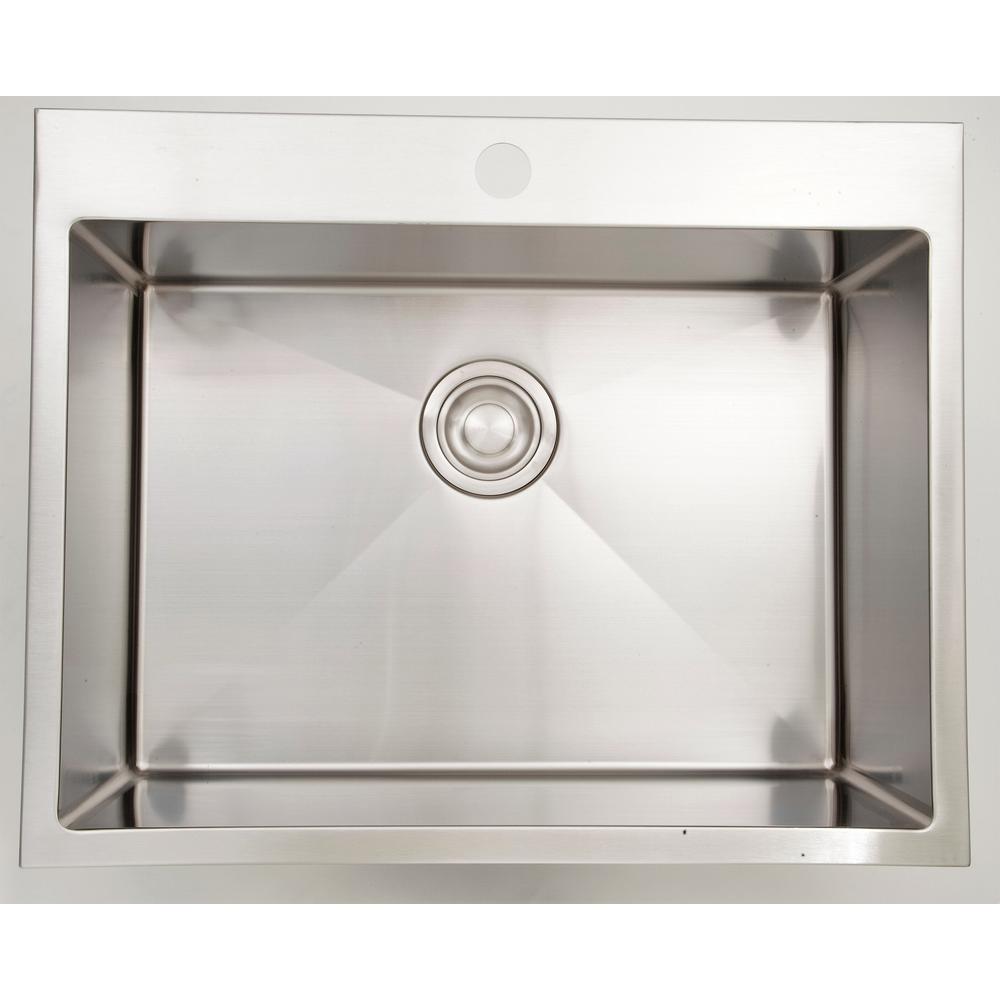
One of the advantages of a drop-in stainless steel sink is the additional counter support it provides. Since the sink rim rests on the countertop, it offers added stability, which is especially useful if you frequently use heavy cookware or handle large amounts of water. This added support can prevent undue stress on the countertop material, making it a good choice for laminate or solid-surface countertops that might not accommodate an undermount sink. The drop-in design also offers a visible edge that can protect the countertop from spills and drips, helping to keep your kitchen cleaner.
When it comes to faucet placement, drop-in stainless steel sinks typically come with one to four pre-drilled holes, offering flexibility for faucet, soap dispenser, or filtered water system installation. The number of holes you need will depend on your faucet style and whether you want additional accessories. Single-hole models are great for minimalist, modern faucets, while multi-hole sinks offer versatility if you prefer a side sprayer or soap dispenser. If your sink has more holes than needed, decorative covers are available to give your sink a seamless appearance.
Drop-in stainless steel sinks are also compatible with various accessories, including grids, strainers, and cutting boards. Sink grids are especially useful as they protect the sink’s surface from scratches and allow water to drain efficiently. Strainers help catch debris, reducing the risk of clogs and making cleanup easier. Some manufacturers offer cutting boards designed to fit on top of the sink, creating additional prep space when needed. These accessories can enhance the functionality of your sink, transforming it into a versatile workstation within your kitchen.
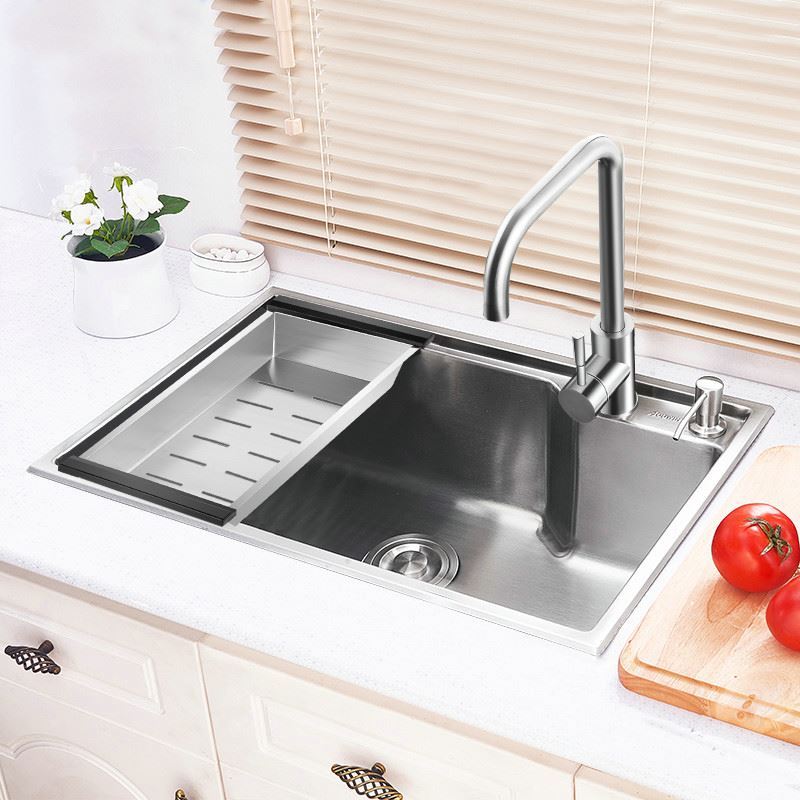
Cost is another factor where drop-in stainless steel sinks offer an advantage. Generally, they are more affordable than undermount models and are available in a wide range of prices depending on the gauge, size, and brand. While higher-gauge sinks and sinks with added features like sound dampening may cost more, they still offer a durable and stylish option that’s accessible to most homeowners. This cost-effective nature of stainless steel drop-in sinks makes them an appealing option for budget-conscious renovations without sacrificing quality or style.
Although drop-in stainless steel sinks are relatively straightforward to maintain, they can show water spots or scratches over time. Simple maintenance routines, like drying the sink with a microfiber cloth after use and using a gentle cleaner, can help maintain its appearance. Additionally, using a sink grid can minimize the risk of scratches from pots and pans. With proper care, stainless steel sinks can remain shiny and functional for many years, adding value and style to your kitchen.
Stainless steel drop-in sinks are widely available in various price points and styles, making them an accessible choice for homeowners with diverse design preferences. Whether you’re remodeling a kitchen or building a new one, you can find a drop-in stainless steel sink that fits both your budget and aesthetic. With its blend of durability, hygiene, and style, a stainless steel sink is a sound investment for nearly any kitchen. This versatility and the range of available options allow you to customize your kitchen sink choice without compromising on quality.
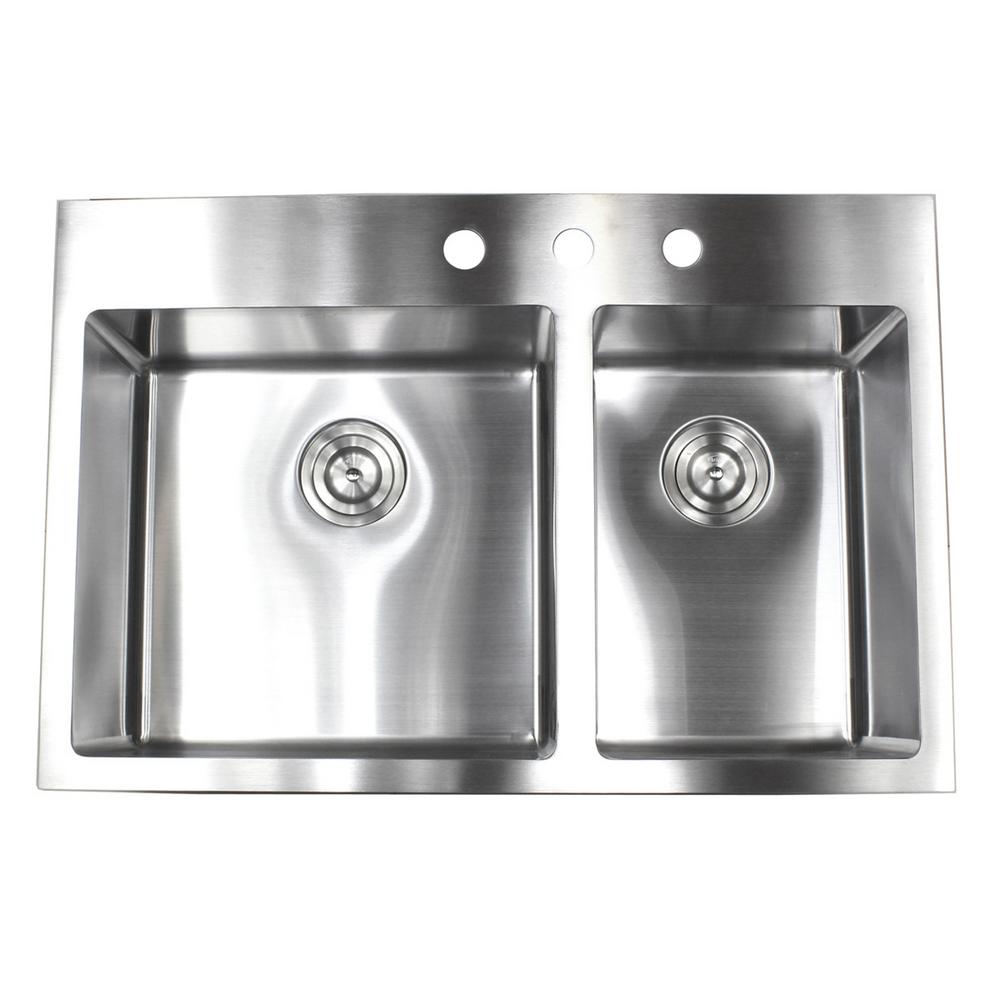
Common Mistakes to Avoid
One of the most common mistakes when choosing a drop-in stainless steel sink is overlooking the gauge of the steel. Thinner gauges may be more affordable but can lead to issues like noise and dents, especially in busy kitchens.
Another mistake is misjudging the number of pre-drilled holes needed; selecting a sink with too few or too many holes can complicate faucet installation.
Choosing a sink size that doesn’t fit the countertop cutout can lead to costly modifications. Additionally, failing to maintain the sink with routine cleaning can lead to water spots or scratches that detract from its appearance.
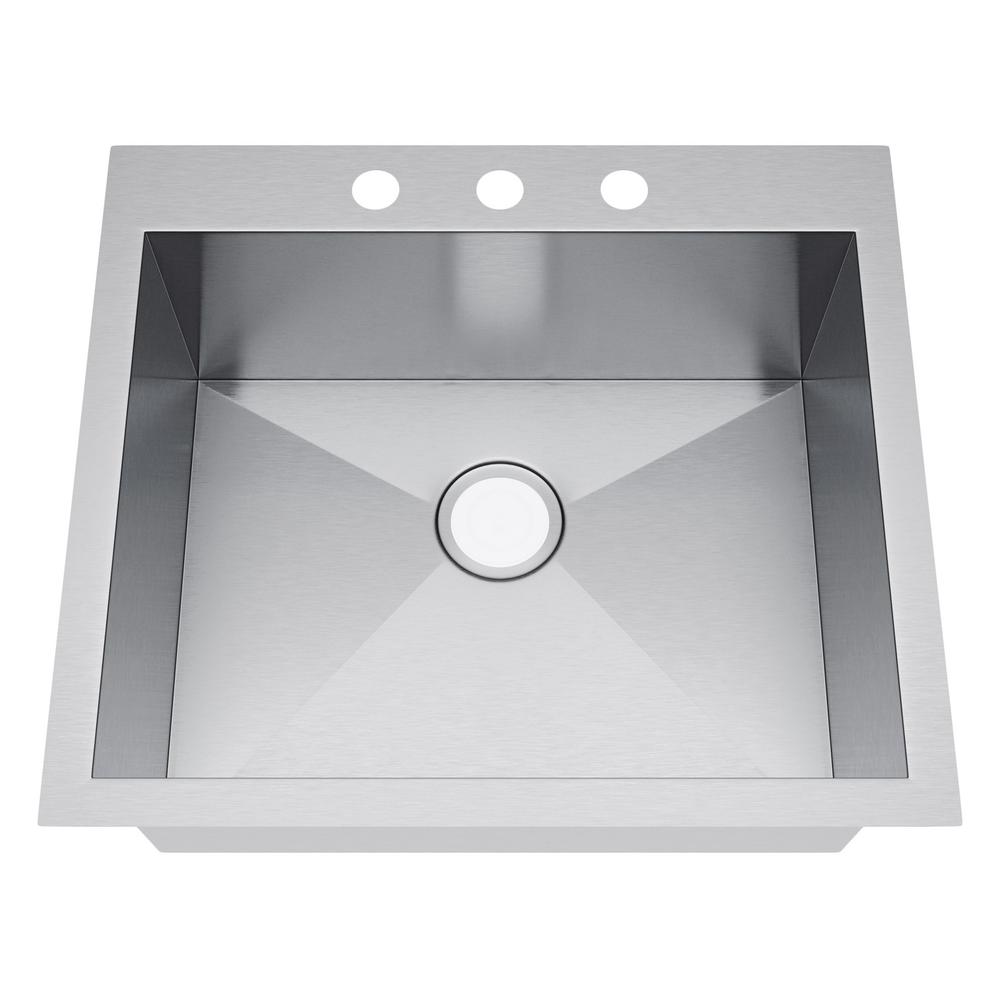
What gauge is best for a stainless steel kitchen sink?
In my experience, a 16 or 18-gauge sink provides excellent durability and noise reduction. Thicker gauges, like these, withstand heavy use and help dampen sound, making them ideal for most kitchens.
How do I clean and maintain a stainless steel drop-in sink?
I recommend cleaning it regularly with mild soap and water, then drying it with a microfiber cloth to prevent water spots. For tough stains, a non-abrasive cleaner can help, but avoid harsh chemicals to preserve the sink’s finish.
Can I install a drop-in sink myself?
Yes, a drop-in sink is typically easier to install than an undermount sink since it rests on the countertop. However, if you’re unfamiliar with plumbing, you may still want to consult a professional for secure mounting and sealing.
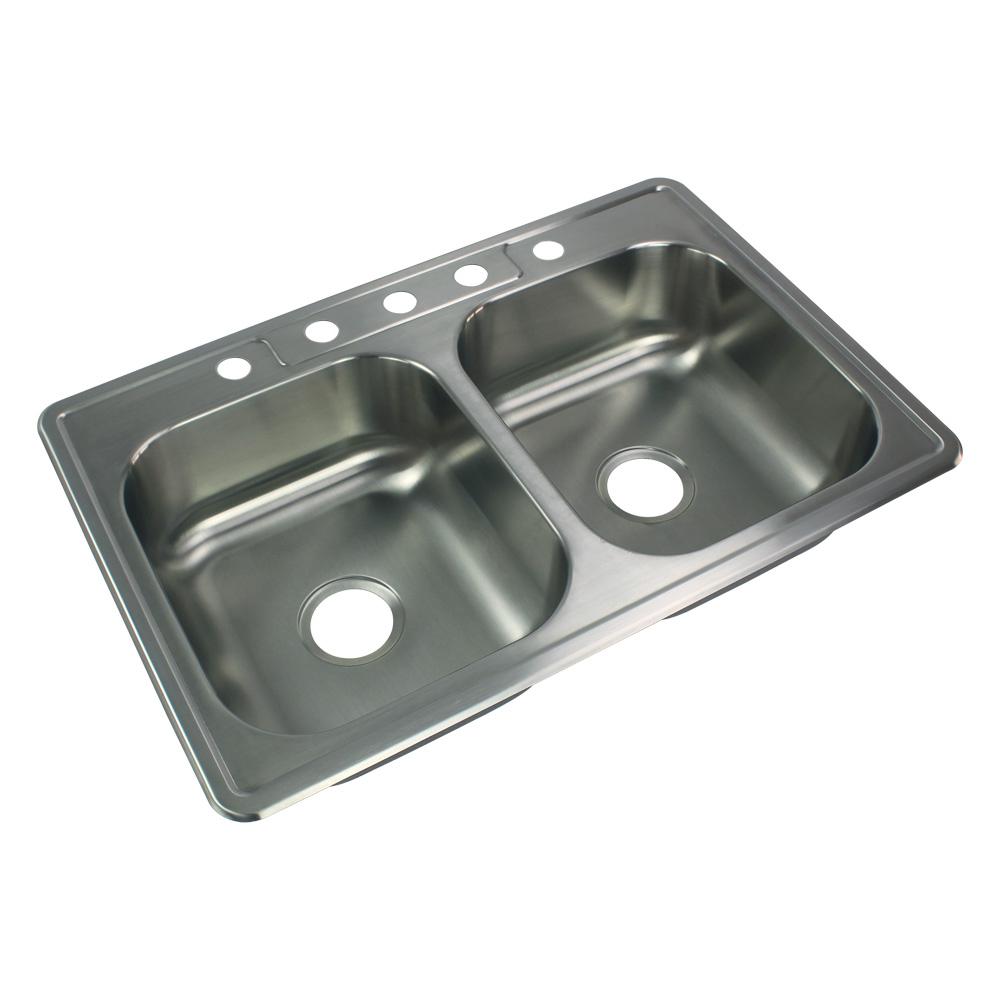
Are stainless steel sinks noisy?
They can be, especially in thinner gauges. To reduce noise, look for models with sound-dampening pads or thicker gauge steel. In my kitchen, sound-dampening pads have made a noticeable difference in reducing clanging sounds.
What accessories should I consider for my sink?
A sink grid protects against scratches and allows water to drain efficiently, while strainers can prevent clogs. I’ve found these accessories helpful, especially in a busy kitchen where sink protection is important.
Do stainless steel sinks scratch easily?
Stainless steel can scratch, particularly if it’s a polished finish, but minor scratches are less noticeable with a brushed or satin finish. Using a sink grid and avoiding abrasive cleaners can help maintain a smooth, scratch-free surface over time.

Extra Deep Laundry Room Sinks – Sink And Faucet

Related Posts:
- My Kitchen Sink Is Clogged How Do I Fix It
- Kitchen Sink Red Wine
- Paint Kitchen Sink Black
- Crane Kitchen Sinks
- How To Get Rid Of Ants Around Kitchen Sink
- Single Sink Vs Double Sink Kitchen
- How To Plumb A Kitchen Sink With Dishwasher
- Kitchen Sink Dealers
- How To Install Top Mount Kitchen Sink
- Kitchen Sink Plumbing With Garbage Disposal And Dishwasher